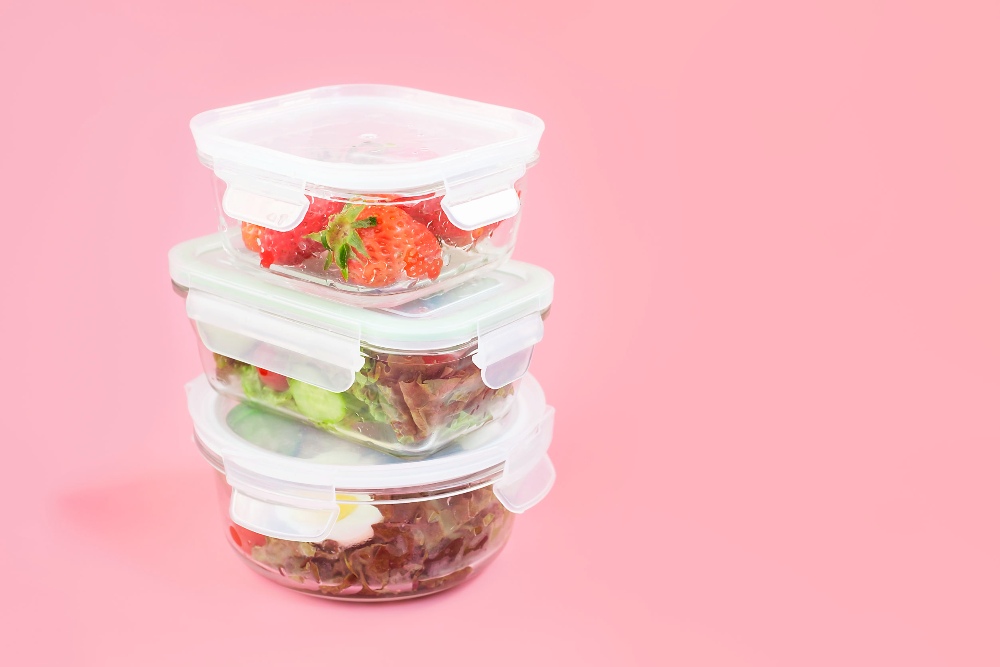How To Stretch Your Dollar When It Comes To Home Cooking
Are you someone who usually eats out or orders in because you’re always short on time – but are now considering cooking at home more because food prices have really started to burn a hole in your pocket?
And are you tearing your hair out because you don’t know where to start?
Then this one’s for you.
It’s true that budgeting for groceries and planning meals for the week ahead can be daunting if you’ve never done it before. Like, what should you buy to make cooking at home more cost-efficient? (Not that $15 tub of ice cream, that’s for sure.) What’s the best way to stretch your dollar so that one lot of groceries can last a week?
TBH there’s no one-size-fits-all solution because every family and household has different needs – like dietary requirements, for example – but the key is to strike a balance between cost efficiency and convenience, and keep trying things out until you find a solution that works for you.
Here are some tips to make the process easier and hopefully more fun.
How to make a meal plan
Planning meals for the week ahead and making grocery lists can be time-consuming at first. And, yes, it can be super tough to think of what to make every night for a whole week! But being organised about what you’re cooking can really help save time and money.
If you’re creating a grocery budget from scratch, consider starting with approximately 10% of your monthly income on food (you can keep tweaking this as required). Now that you know how much you can spend per week on groceries, think about what recipes you can make with that budget, taking into account how much time you’ll have to prep and cook each meal.
Tip: Instead of ambitiously planning meals with different ingredients, I find it much more convenient to pick recipes with ingredients that can be cooked in various ways and used for multiple meals. I also highly recommend repeating recipes every two weeks, which means you can cook double batches of each dish at a time. Freeze the extra batch, so all you need to do the next round is heat it up!
Remember, meal planning doesn’t have to be boring. Let your creativity go wild and plan themed events – Meatless Mondays, Taco Thursdays or Fried Rice Fridays, anyone? If you have kids, get them to jump in and help plan the meals, so the process is more fun for all.
Note that meal planning may not work for you if you have an erratic schedule or picky kids who are in the habit of refusing meals depending on their mood. But hey, it’s worth a try, right?
Create a shopping list
Now that you have some idea of what you’ll be cooking for the week ahead, having a detailed shopping list is the next step to managing your grocery budget. A written shopping list (rather than a mental one in your head) will help you stay focused, avoid impulse buys, and minimise the chances of you forgetting important ingredients or adding unnecessary items to your cart.
Stock up on specials
Where you get your groceries can also help your planning. If you’re shopping from a grocery store like NTUC and Giant, for example, you can easily check out the weekly store specials online beforehand, and identify which ingredients will give you the most bang for your buck that week.
The key is to make cheaper ingredients your hero ingredients, because they form the core – and majority cost – of your menu. It helps to be flexible with your menu planning and have alternative recipes in mind when you shop, so you can work around using the lowest-priced ingredients.
Buying fruits and vegetables that are in season can also help to reduce your grocery bill, as seasonal produce is often cheaper, not to mention fresher and more nutritious!
Take advantage of discounts and markdowns
Grocery stores regularly mark down items for a variety of reasons, including a close sell-by date, a seasonal special, or an overstock. But a reduced price doesn’t necessarily mean that the food is past its prime – it can be a smart buy (make sure to check the expiry date, though).
Don’t get tempted to get something just because it has a low price, though. Buying something you don’t normally have at home means you’re probably unlikely to use it, making it a waste of money.
Buy in bulk
For non-perishable pantry staples – such as rice, pasta and canned goods – in particular, consider buying them in bulk when they’re on sale, because this can help shave a lot of $$ in the long run.
Avoid processed foods, pre-cut and pre-packaged foods
Pre-cut and pre-packaged foods can be convenient and help save time, but they almost always cost more, as do pre-made meals and boxed mixes, because you’re essentially paying for convenience. Buying whole fruits, vegetables and meats and doing the prep work yourself can lead to significant savings for not a lot more effort.
Processed foods, meanwhile, are usually cheaper than healthier alternatives, but what you save in cost you could end up losing in nutrition. Consider whether what you’re buying is a “need” or a “want”. Do you really need to spend another $5.40 on that bag of potato chips?
Shop online
You’re saving money by meal planning, so why not save on time as well by shopping online? (Those with children, especially, will appreciate this – how many times have you taken your kids for a quick grocery run, only to have it take much longer than you thought and end up with your cart full of items you didn’t plan to buy?)
Shopping online also means you can take advantage of online deals and have your groceries delivered to your door so you don’t have to lug around those 5kg bags of rice and rolls of toilet paper. I also like that you can keep your eye on the total bill as you fill up your cart, which you can’t do when shopping at a physical store. This helps you stick to your budget.
 IMAGE: 123RF
IMAGE: 123RF
Have a “leftovers day”
I love giving leftovers a new lease on life by turning them into something completely different. Every week, designate one day to finish all your leftovers in the fridge, before starting on a new week of groceries. Leftover grilled chicken? Shred it and make it a sandwich filler. Turn leftover veggies into a cheap but filling frittata, or transform leftover pasta into a hearty pasta salad. Take advantage of cheap pantry staples such as rice and pasta to use up the leftovers creatively.
7 top tips to shop wisely
Now that you know how to plan and shop so that you’re making the most of your budget, here are seven of my favourite grocery shopping hacks to help you go the extra mile.
- Become best friends with tofu – tofu is perhaps the cheapest source of protein available, and comes in different textures (firm, soft, extra firm) to cater to different preferences
- Swap (pricey and unhealthy) sugary breakfast cereals for overnight oats or oatmeal. You can ‘recycle’ leftover oatmeal too (hello delicious cookies and pancakes), unlike soggy cereal which is only good for getting tossed out!
- Swap fillets for mince. I love how versatile mince can be. Use it to make burgers, meatballs, lasagna or pie fillers, and more.
- Buy home brands. Rather than buying something from a well-known brand, choosing a home brand option will usually give you the same quality and taste at a decent price difference.
- Use all parts and make your money work for you. Instead of buying a few chicken breasts or legs, buy the whole chicken and have your butcher slice it for you. You can use the legs, breast and wings for different recipes, and the unwanted bits for making stock. Ditto for vegetable peels and scraps.
- Substitute expensive ingredients with something more affordable. If a recipe calls for an expensive ingredient, try substituting it with a cheaper alternative. For instance, if you’re planning on making beef burgers, make chicken burgers instead. If sausages are on sale, discard the skins and use the meat filling in different ways.
- Don’t overlook the PWP (purchase-with-purchase) offers at your grocery store, especially if something you usually buy is on offer.
For the latest updates on Wonderwall.sg, be sure to follow us on TikTok, Telegram, Instagram, and Facebook. If you have a story idea for us, email us at [email protected].











